|
This card, postmarked in 1907, shows the post office and general store of Herbert Taylor Leavitt of Chichester, New Hampshire. In the 1870 and 1880 censuses, he was seen as a store clerk and, the following year, was (on his marriage record) a merchant. According to the History of Merrimack and Belknap Counties, N.H., pg 251, Herbert ran a business in Tilton for several years, before returning home and purchasing the stock in trade of Augustus Sheldon, and "filled up the store with a choice line of groceries and dry goods". He also extensively dealt in corn and flour and leased a storage facility at the town railroad station, his product being shipped in from the west. The Chichester Street Directories (incl. in the Concord editions from 1900 on) listed his occupation as "postmaster and general store" on Centre Road, from 1900 to 1915 (in 1885, his wife Charlotte had been appointed postmaster, taking over the position formerly held by Herbert's uncle Solomon Leavitt, and held the job until 1911). Following this, no occupation is given him, but the 1920 census shows he was a farmer. At that time, he was serving as town treasurer. Below is from the 1892 map of Chichester, NH, the Leavitt buildings highlighted. The store and P.O. of "H. T. Leavitt" is located in center of image. (Above) is the current view of the former store of H. T. Leavitt. GPS: 43.249184, -71.399716 Herbert T, the son of Hazen Kimball and Eunice Lake (Howe) Leavitt, died in his native town on 10 Dec 1921, aged 71 years, and was buried in the Leavitt Cemetery [grave photo on Chichester cemeteries page]. His wife, the former Charlotte A Dearborn, died in 1928. They had no children.
Descendants of Thomas Leavitt v4, pg 118
0 Comments
RETURN DAVID LEAVITT was the son of Loirett and Elizabeth (Harned) Leavitt [Descendants of Josiah Leavitt, pg 92], born about 1839 in PA. He was raised in Mercer County, and attended schools there until aged sixteen. In the 1860 census, he resided in the town of Perry, a 21-year old laborer, living with his parents. During the Civil War, he served in Co. H, 55th Pennsylvania State Militia, from 18 June to 29 Sep 1863 (the unit was only raised for three months service). He moved with his parents to Beaver Township, Crawford County, PA by 1865, when his father, "L. Leavitt", is found on a map of Crawford County. "J. Tennant", just down the road from the Leavitt farm, was John Tennant, father of Return's wives. He was first married to MARTHA LUCRETIA TENNANT, daughter of John and Catherine Tennant, ca 1872. They had a daughter, Cora, born just before Martha died on 14 March 1873 [date from gravestone in Beaver Center Cemetery]. He remarried, ca 1874, her sister HULDAH SUSANNAH TENNANT, and they had daughters Viola Adella and Mary Lucretia. He had a farm of 102 acres while in PA. The 1876 map of Beaver Township shows "R. D. Leavitt" owning several lots of land (highlighted in yellow). Brother "L. A. Leavitt" (Leander A.) is also nearby. He and Huldah were divorced around June 1892 (per her marriage record in Apr 1893), and he removed to Labette County, Kansas in 1893, purchasing farmland in Osage Township (Section 16, Township 31, Range 18). The book, History of Labette County, Kansas, and Representative Citizens was published in 1901 [on Internet Archive], and included a biography about Return D. and his parents. It only mentioned him marrying once, in 1872, and having three children, who were living in Silver Creek, NY. Dementia apparently soon overcame Return, as he claimed his neighbors had "hoo-dooed his hens and caused them to lay rotten eggs". Chasing off one of the townsmen with his shotgun, an intent to kill, brought the law to Leavitt's farm. R.D., sitting atop his hen house with a shotgun and pistol, was coaxed down and subsequently arrested [Parsons Weekly Sun, 30 Sept -18 Oct 1904]. Newspaper reports said he was "of Dennis", which was a small community less than 30 miles from Osage. He was deemed insane on 14 Oct 1904 and was admitted to the state hospital in Osawatomie. Mrs. Catherine S. Hyatt was appointed guardian at that time (she was replaced in 1911). An article in the Parsons Daily Eclipse, on 2 Dec 1911, mentioned that the state had sued the estate of Mr. Leavitt to recover the costs of his care ($1,104). It noted that he was unmarried, owned 40 acres of land, and had $500. He was under the guardianship of J. G. Cook by then. Return Leavitt was still alive in March 1914, when the guardian of his estate (John Cook) submitted his annual report [The Weekly Republican, 19 Mar 1914]. A final report was submitted on Oct, 1915, where Cook asked for a discharge, his ward being deceased [The Oswego Democrat, 8 Oct 1915]. Map of Crawford County, PA, 1865 [Library of Congress]
Map of Beaver, Crawford, PA, 1876 [on Ancestry] Map of Osage Township, Labette, Kansas, 1887 [David Rumsey Maps] Map of Osage Township, KS, 1906 [Kansas Memory] Below is a current map of the lots in Beaver Township where the Leavitt and Tennant families lived (red lots are estimated outline of Return's parcels ca 1876). JUSTIN M. LEAVITT was 17 years, 8 months and 12 days old when he enlisted in his hometown of Buxton, Maine on Dec. 19th, 1863. On his enlistment paper, he wrote "about eighteen years" for his age, and his father Alvah signed the consent form to allow his only son to join the army. From there, he was sent to Portland, Maine, where he would be mustered in for three years with the First Maine Heavy Artillery Regiment. Originally the 18th Maine Infantry, the regiment had converted over to an artillery unit, and was in the process of recruiting more men to fill their ranks. The soldiers were then shipped to Washington, DC, where they would be trained in both artillery and infantry instruction, and serve in the defense of the capital, until otherwise needed. The need for these troops came in the spring of 1864, when Gen. Grant began his Overland Campaign in Virginia, and sent the Army of the Potomac to Spotsylvania Court House. On May 19th, the 1st ME Heavy Art., along with four other artillery regiments converted to infantry, entered the fight at the Harris Farm. Justin would be one of over 500 men in the regiment who fell that day, the majority of them wounded. He received a gunshot wound in his left leg that fractured his tibia. Caught under fire in the field, he had to wait until after dusk for help to reach him and get him to an aid station. They concluded that his leg would need to be amputated, and he was shipped with others to Lincoln Hospital in Washington, DC, a three day trip. Despite the pain, he continually begged for surgeons not to take his leg, and they eventually complied with his plea. He spent four months in the DC hospital before being sent back to Maine, where his care continued, until discharged from service on the 4th of Apr, 1865. Upon returning home to Buxton, he entered the Gorham Seminary school, and would also teach school during the months not in class. In 1871, he was appointed mail agent on the Portland & Rochester Railroad, which was later expanded to reach Nashua, NH and Worcester, MA. He was transferred to the Boston & Troy mail line (Hoosac Tunnel route) in Jan. 1878, and was promoted to head clerk. In August of 1882, he ran for the office of Registrar of Deeds in York County and won the position. He resigned from his railroad job to accept this new line of work on the 1st of Jan., 1883. He held the job for twenty years. Prior to 1890, he and wife Ella had moved from Buxton to Alfred, Maine and, before 1909, were residing in Kennebunkport. Justin was the owner of the "Stone Haven" summer hotel at Cape Porpoise (it burned in 1931, a couple of weeks before his death), and several islands (Milk, Savin, Bush, and part of Folly) offshore. In 1902, the governor appointed him state liquor commissioner, a job he held until 1911. He was director of the Fidelity Trust Co. in Portland, and had served as commissioner of the Kennebunk and Wells Water District for twelve years.
He was a member of the Knights Templar and was a 32nd degree Mason, having been a member for over 60 years. He was also a member of the John H. Came G.A.R. Post in Buxton, Society of the Army of the Potomac, and the Third Army Corps Union. He was the son of Alvah and Margaret McArthur (Libby) Leavitt, and had been born in Limington on 7 Apr 1846, moving to Buxton when seven years old. His ancestry can be found in The Descendants of Thomas Leavitt, pg 102. Sources:
First Maine Heavy Artillery Monthly Return: May 1864 (Family Search) Biddeford Daily Journal, Fri., 1 May 1931, pg 1 Biddeford Weekly Journal, Fri., 17 Jan 1908, pg 7 Men of progress; biographical sketches and portraits of leaders in business and professional life in and of the state of Maine, pg 247 (Internet Archive) Sanford Tribune and Advocate, Thurs, 7 May 1931, pg 1 The First Maine Heavy Artillery, by Shaw and House (1903): Leavitt on pg 358; 445 A RPPC (real photo postcard), dated probably in the 1940's, of the "E. J. Leavitt" general store and post office in Flagstaff, Maine. EVAN JAMES LEAVITT came to the town of Flagstaff by 1935, with his wife Evelyn and their two young children. He was first employed at a local saw mill prior to taking over operations of the general store in town. Attached to the building was the town's post office, and he took charge of the facility on 9 Dec 1941. There were around 125 residents in Flagstaff when it was announced, in June of 1948, that Central Maine Power was going to build a dam at Long Falls, on the Dead River, which would create a man-made reservoir, Flagstaff Lake. In the process, it would inundate the town and neighboring Dead River Plantation. For twenty years, CMP had been purchasing properties in the vicinity of the river, and there was always talk within town that this would be the end result. Their decades long fear had now come true, and their town would now be destroyed. Valuable lumber was cut, houses were moved, while others were simply burned down or left standing for the rising waters to claim. Cemeteries that held the early town settlers were reinterred elsewhere. Postmaster Leavitt announced on 19 Oct 1949 that the town's mail would now be delivered out of New Portland by rural carrier, effective on the 31st, and he closed down the post office on November 1st. There were only 20 families now remaining in town, but Evan chose to stay behind to run his store until all had left. The dam was due to be finished that winter, with the flood waters soon to follow. With the new year came spring run off, which rapidly began filling the new lake, and so the end of the town was near. Evan stayed on as store keeper until the last week of March, 1950. A new home and store had been built over in Eustis, so it was now time to move on. For the next couple of years, any buildings still standing, which included the general store, would again be seen when the lake was lowered in the winter (to avoid overflowing the dam that following spring). They were all eventually burned down by 1952. Evan died in 1977, aged 72, and was buried in Flagstaff Cemetery in Eustis. He shares a stone with his wife, Evelyn (Wing), who died in 1986. They can be found in the Descendants of Samuel Leavitt v.5, pg 135.
Sources:
The Bangor Daily News, 6/28/1948, pg 5; 11/2/1949, pg 13; 3/24/1950, pg 6 Portland Press Herald, 7/5/49, pg 7; 11/25/1949, pg 8\ Map of Somerset County, Maine, 1860 (on Library of Congress website) USGS Topoview Maps [link to index of available maps] From the American Biography: A New Cyclopedia, Vol. 5, by William R. Cutter, is this photograph of JOHN PARSONS LEAVITT. He was a Lynn, Massachusetts native, born there on 14 May 1847 to William Parsons and Sarah (Jordan) Leavitt. His parents, having married in Lynn in 1837, had removed to Lebanon, NH soon after, and later went to Woodstock, VT, before returning to the city prior to John's birth. His father was a machinist, a manufacturer of parts for shoe making machinery, with a shop on South Common. He afterwards moved to Federal Street, where he would manufacture wax for the McKay Sewing Machine (for shoes). John's mother died from consumption in February, 1863 at the age of 45. The following year, at only 16 years, 9 mos, he signed up with the 3rd Massachusetts Cavalry. He claimed to be 18 1/2 years old, and gave them his brother Albert's birthplace of Woodstock, VT, perhaps as a way for recruiters to not be able to verify his age. When a minor under 21 enlisted, a parent or guardian usually signed a consent form. John, however, told recruiters that both of his parents were dead, and "I am free to enlist if I choose." He was mustered into Company H on 3 March 1863, for three years of service. The summer of '64 found him hospitalized in Halltown, Virginia due to sickness. Following the ending of the war, the Third Mass Cavalry rode to Washington and participated in the Grand Review on May 23rd. Expecting to then be sent home for mustering out, they instead received orders to ship out west for Fort Leavenworth, Kansas, arriving near the end of June. Pvt. Leavitt became sick again, and spent his time "on the plains" in the fort's hospital. During that time, he was transferred into Co. B, and remained on the rolls until being mustered out on 8 Aug. 1865. He returned home, and went into the machinist trade like his father. Following his father's passing in 1870, he took over the wax manufacturing business, and ran it for about eighteen years, before selling out to a Boston company. His biography says he also had an interest in real estate but, by the 1890's, he had retired from business life. He was a member of the Golden Fleece Masonic Lodge in Lynn. In 1869, he had been married to Josephine Cilley, the daughter of David T. and Sylvina Cilley of Nottingham, NH. In 1877, he had purchased 15 acres of land from his in-laws [Rock. Deeds, Vol. 472, pg 232], and had lived there for a time, but they returned to Lynn prior to 1886, still keeping the Nottingham place for a summer home. They had a house on Walnut Street in Lynn, just a few blocks over from where he grew up on Federal St. The home still stands today. John P. Leavitt died on 22 Sep 1915, aged 68 yrs, and was buried in Pine Grove Cemetery in Lynn. His wife Josie passed away in 1925. They had no children. Notes/Sources:
The American Biography books were published by the American Historical Society, Inc. of New York, beginning in 1916, and compiled by a staff of editors over its 50 plus volume run through 1933. The above photograph was a scan of a separated page from Vol. 5 (1919), its pages having been dissected and the images sold individually on Ebay (2021). Link to book and bio: Cutter, W. Richard. American biography: a New Cyclopedia. New York: Pub. under the direction of the American Historical Society. 1916. - on Hathitrust or Google 1850 Lynn, Essex, MA: hh 581/791; William P. a shoe tool maker; John P, age 2 1860 Lynn, Essex, MA census (pg 401): hh 2484/3429, John P, age 12, w/ parents 1865 MA State Census, Lynn, MA: hh 733; Wm P, 49, wax manuf, John P., 18, wax maker 1870 Lynn, MA census (pg 134): hh 898/1204; John P., 23, machinist, w/ father 1880 Nottingham, Rockingham, NH census (pg 9): hh 82/87; listed as farmer 1900 Lynn, MA census (pg 3A): lived 140 Walnut, retired, owned home 1910 Lynn, MA census (pg 23B): hh 249/386; lived 202 Walnut (same home, # changed); John, a.63, w/ Josephine, a. 58, "own income", marked a Union Army veteran City Directories (Lynn): 1871, 1882, 1886-7, 1895, 1902 Civil War Pension Index: Co. H & B, 3. Mass Cav; filed 17 May 1909 (cert #1,155,827), widow Josie filed 15 Oct 1915 (cert #801,279) Civil War Service Records: full file for John P. Leavitt on Fold3.com (requires subscription) |
A Leavitt Photo archivePhotographs of our Leavitt cousins, and brief write-ups about them Archives
July 2023
Categories
All
|

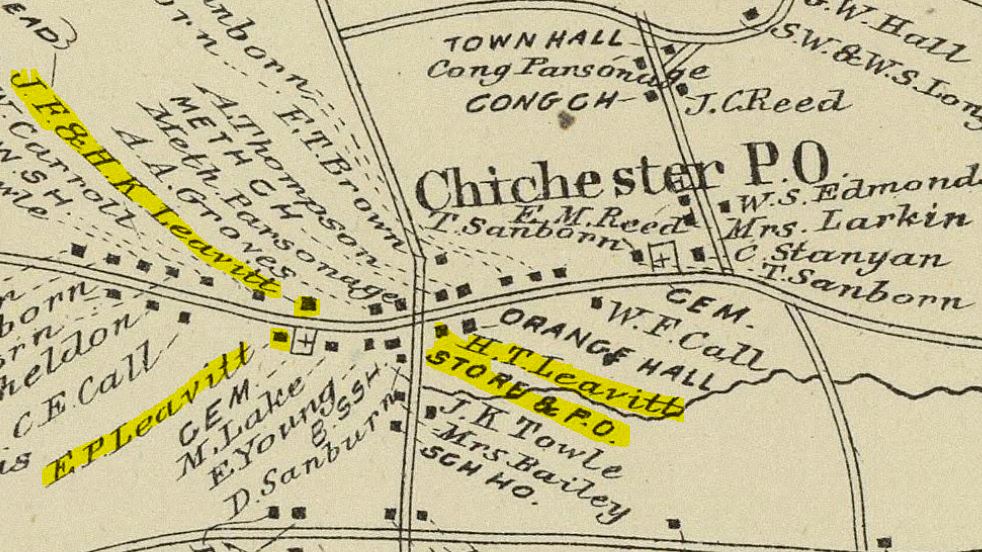



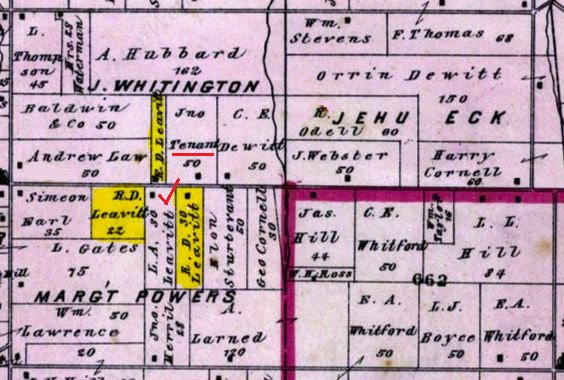

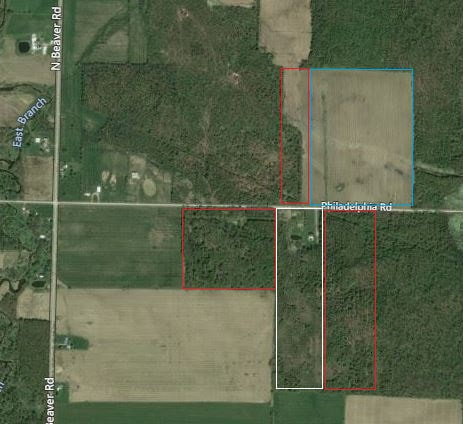



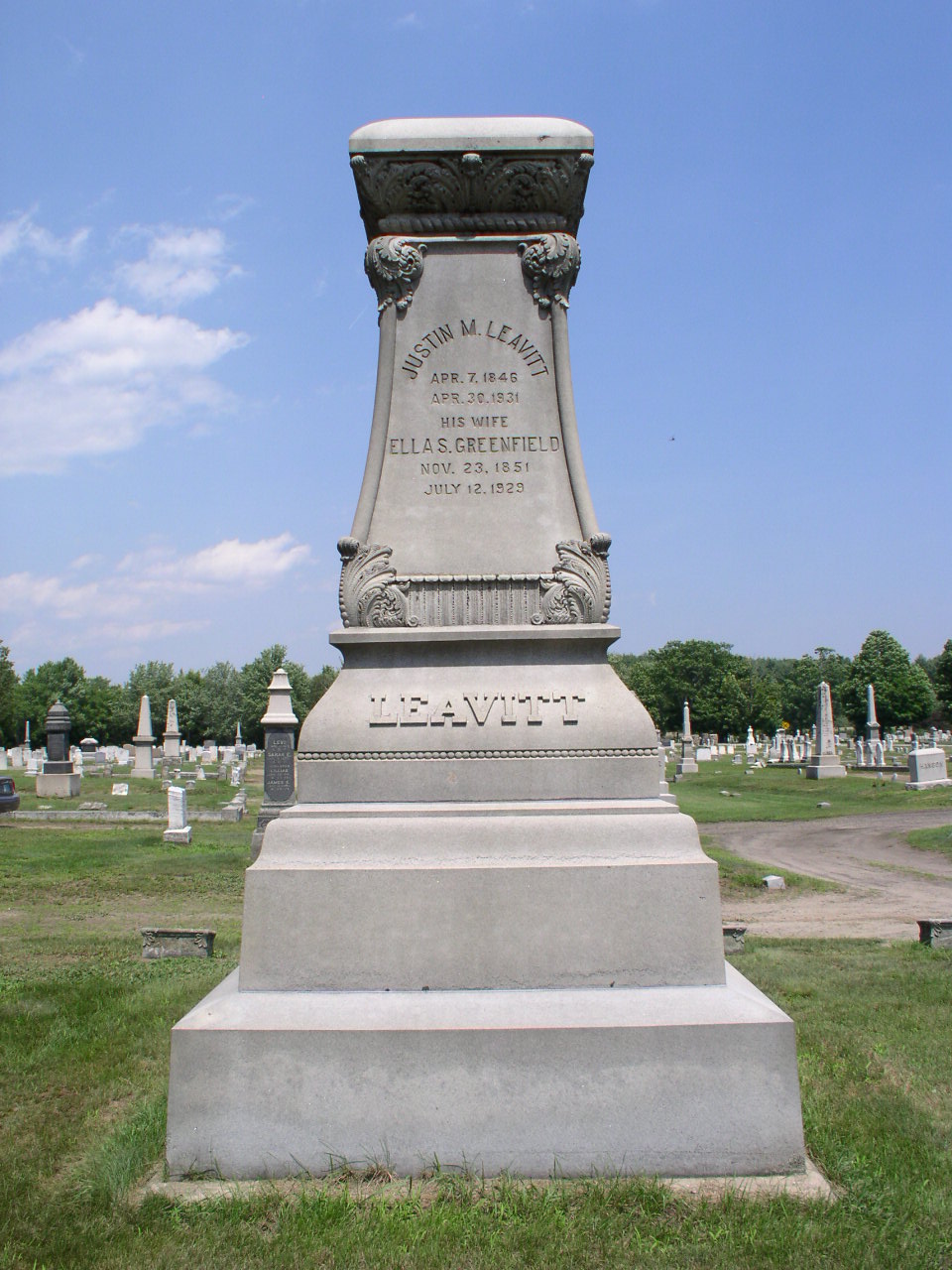







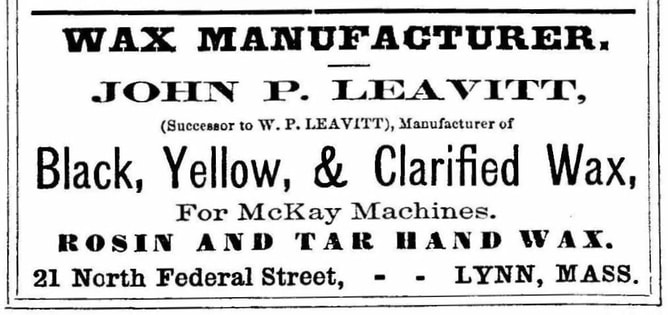


 RSS Feed
RSS Feed